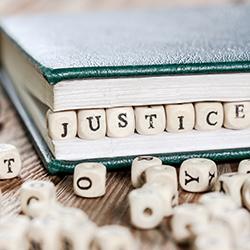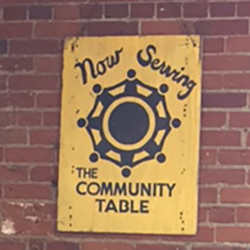Ashley N. Patterson, The Pennsylvania State University
Valerie Kinloch, University of Pittsburgh
Emily A. Nemeth, Denison University
Abstract
In her 1993 book, Wouldn’t Take Nothing for My Journey Now, Maya Angelou poignantly describes the importance of giving to others—giving that enriches life and symbolizes love, liberation, and humanity. Drawing on Angelou’s belief that “giving liberates the soul,” this article pushes for a more critical and nuanced way of understanding what it means to “give” and “receive,” as realized through a social justice framework. This is particularly important in work that involves young people and adults advocating for sociopolitical change within historically disenfranchised communities. To insist on a nuanced understanding, this article analyzes qualitative data from a three-year service-learning and community engaged initiative, “Bringing Learning to Life,” within an urban school district and community in the U.S. Midwest. It addresses the following questions: What educational, social, and political possibilities emerge when young people and adults collaborate on publicly engaged scholarship in urban communities? How do they refrain from negative narratives of giving/giver and helping/helper and, instead, reconcile such dichotomous positions through acts of solidarity around shared concerns? How do they see themselves as agents of change? What are the stories they tell?
Keywords
civic engagement, critical service learning, urban, K-12 students, community
Author Note
This research was funded in part by a grant titled “Bringing Service Learning to Life: Service-Learning for All Educators,” from the Corporation of National and Community Service, Learn and Serve program.
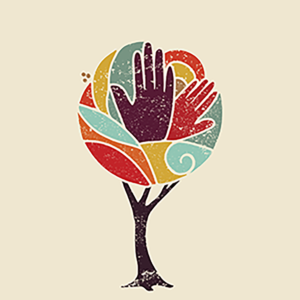
In her collection of twenty-four short essays or meditations, Wouldn’t Take Nothing for My Journey Now, Maya Angelou (1993) makes autobiographical references to her childhood and young adult years. She reflects on her own experiences and on varied facets of society (e.g., racism, death, pregnancy, sensuality, etc.) through the lens that was uniquely and creatively hers. She draws readers in through her seamless entwining of poetry and prose, sharing stories that are not only meant to entertain and heal but to also enlighten and educate. In one selection, she acknowledges the relationship between giving and receiving by offering her readers the following self-revelation:
I have found that among its other benefits, giving liberates the soul of the giver…the best thing one can give is that which is appreciated. The giver is as enriched as is the recipient, and more important, that intangible but very real psychic force of good in the world is increased. (p. 14)
Angelou rejects the idea that the giver and the receiver, as well as the act of giving and receiving, are necessarily distinct roles and ways of being. In her estimation, both benefit from the giving process and, more importantly, the interaction benefits humanity at large. In giving of ourselves, our time, our tangible possessions, and our intangible gifts, we are contributing to the sum total of the world’s goodness. Such a contribution encourages us to consider some of the specific ways Angelou’s wisdom can serve as a form of disruption between limited understandings of giving and receiving and between traditional ways of engaging with, and learning from, the public.
In this essay, we rely on Angelou’s (1993) wisdom to situate our work—a five-year collaboration among a university, a school district, teachers’ unions, and community agencies—within broader contexts of social justice and engaged scholarship. Angelou’s conceptualization of giving and receiving, for example, troubles traditional considerations of philanthropy and public service. It moves us toward an understanding of the exchange of benevolent support as civic engagement, which informs our position as publicly engaged scholars working with/in urban communities. This understanding provides us with an opportunity to discuss engagement through the lens of giving and receiving. We begin with a brief examination of the literature on engagement in the context of philanthropy and service-learning and the modes of cooperation that were central to our work. Then, we utilize Angelou’s storytelling approach to discuss our work with/in urban communities, allowing us to examine the needed disruption between giver/giving and receiver/receiving. Binaries, we contend, often limit the nature of philanthropic efforts. Thus, through the use of narrative, we reframe these binaries as roles that are, and need to be, flexible, reciprocal, and continually shifting.
Brief Literature Review: Philanthropy, Service-Learning, and Engagement
Lynn and Wisely (2006) describe the three traditions of philanthropy observed in U.S. society and offer a fourth that they assert moves beyond limitations of the others. The first three traditions are relief, improvement, and social reform. The authors describe the relief tradition as steeped in ideas about charity, fueled by compassion or “other-regarding love” and an obligation to attend to the needs of fellow human beings (p. 211). Taking such an approach does not address the cause of suffering because it does not demand a critical examination of the systems that cause and maintain suffering. As a result, this tradition is complicit in perpetuating social inequality. The second tradition, improvement, seeks to maximize human potential. Instead of attempting to relieve the concerns of “the needy,” this tradition focuses on those who want to help themselves via avenues such as monetary scholarships and access to learning sites (e.g., public libraries). This tradition brings with it the risk that those who are better positioned to help themselves receive greater proportions of the available benefit while those in more dire need are often unable to access such benefits due to the inequitable nature of the social system that both sets up and reinforces these separate positions. Partly in response to this limitation, the third philanthropic tradition, social reform, attacks the underlying causes of inequality and seeks to effect social change. One limitation of this tradition is that it sets up a dichotomy in which some do for others instead of working alongside those who have an identified need. Reflecting upon these three traditions, Lynn and Wisely offer a fourth tradition, civic engagement.
For Lynn and Wisely, the three observed philanthropic traditions are best realized through civic engagement. Unlike the other traditions, civic engagement is inclusive of multiple voices and committed to connecting concerned citizens with one another. Civic engagement does not require philanthropists to have financial means or social status; anyone with interests around the identified social issue can contribute to collective efforts to combat and alleviate it. Although Lynn and Wisely see rich potential in this new philanthropic turn, they also warn that engagement is critical, warning that, without it, civic engagement transforms into more talking and less acting.
We recognize the importance of this new turn toward civic engagement, believing that we must “promote civic engagement and encourage public moral discourse, by cultivating hospitable spaces for reflection and by bringing diverse people and perspectives into conversation” (Lynn and Wisely, p. 217). We engage in this type of work by having an explicit commitment to publicly engaged scholarship, as evidenced by our long-term involvement in a critical service-learning initiative, “Bringing Learning to Life,” held in the U.S. Midwest between 2010 and 2015.
For us, Lynn and Wisely’s assessments of philanthropic traditions are applicable to education, especially in the context of service-learning. According to Jeavons (1995), service-learning is a pedagogical approach “that involves students in activities that both provide service to a community and engage students in an experience where they acquire knowledge, skills or perspectives that broaden and deepen their understanding of a particular concept or subject matter” (p. 135). Service-learning has been shown to encourage a range of benefits including: having a positive impact on participants’ civic identities (Pascarella & Terenzini, 2005; Weiler, 2013, Snell, Chan, Ma & Chan, 2015); creating opportunities for participants to be active within communities (Melchior & Bailis, 2002; Ohn & Wade, 2009); and encouraging rich collaborations between schools and community organizations that positively impact student growth (Kinloch, Nemeth, & Patterson, 2015; Kinloch & Smagorinsky, 2014). Like Lynn and Wisely, Hart (2006) identifies particular benefits of traditional service-learning while also noting its limitations and a need for a new way of engaging participants in critical service-learning projects. Because traditional service-learning projects do not necessarily interrogate inequitable power structures that result from unmet social needs, Hart argues that traditional service-learning treats the symptoms of social inequalities without fully seeking to eradicate them (see also Jones, Maloy & Steen, 1996; Butin, 2003; Nemeth et. al, 2015). As with traditional approaches to philanthropy, traditional service-learning does not require critical examination of institutionally reinforced inequalities. Instead, such approaches reinforce “a view of social problems as unfortunate, possibly deserved, outcomes that can be overcome by caring individuals” (Hart, 2006, p. 23). Hart supports critical service-learning as a pedagogical approach that enhances traditional service-learning. When engaged in critical service-learning projects, participants seek to affect social issues positively and to work on disrupting the structurally rooted causes of those issues. Hart notes that a foundational requirement of critical service-learning is the reciprocal nature of relationships in which “one member of the partnership is not privileged over another” and “all members of the partnership experience benefits” (p. 27). Only through an examination of educational inequities and social inequalities will people come to better understand how they fit—or do not fit—into such systems. Important to this work is an articulated focus on relationships and engagement.
As service-learning participants, practitioners, and researchers interrogate systems of inequity and inequality, it is essential that they work within an engaged framework. According to the New England Resource Center for Higher Education website, engagement represents partnerships among various people, organizations, and institutions that seek “to enrich scholarship, research, and creative activity; enhance curriculum, teaching and learning; prepare educated, engaged citizens; strengthen democratic values and civic responsibility; address critical societal issues; and contribute to the public good.” Engagement reflects a commitment to participating in critical dialogue with others, creating sustainable community relationships, and disrupting power hierarchies that reiterate unfair, socially unjust practices (see also Kinloch, 2016; Mulligan & Nadarajah, 2008).
This framework of engagement has important implications for educational projects that are guided by, and invested in, understanding “that intangible but very real psychic force of good in the world” (Angelou, 1993, p. 14). In other words, engagement encourages us to utilize a critical perspective by which to question the meanings of giving/receiving; consider understandings of philanthropy as civic engagement; and name tensions between traditional and critical iterations of service-learning. We are encouraged by the stories of engagement we have learned from our educational collaborations with various people who attend school, work, and/or live in urban communities.
The Stories They Tell: Methodology and Cases
Relying on Angelou’s understanding of giving and receiving allows us to embrace the power of story—the power of listening to, collecting, exchanging, and reflecting on the stories that others have shared with us (and that we have shared with them). By sharing aspects of our collective stories (see Kinloch & San Pedro, 2014), we are able to think differently about the nature of giving and receiving, push beyond binaries, disrupt “single stories” (Adichie, 2009), and resist simplified conceptualizations of not only giving and receiving but also of engagement. Because we understand the importance of stories in everyday life and in educational research, we purposefully attend to stories about giving, receiving, and engagement in relation to teaching and learning. Doing so encourages us to ask: What stories of engagement do teachers and/or students tell us? How do these stories advance our understandings of giving and receiving when conducting critical service-learning projects?
Vignette #1: Valerie and an Overview of “Bringing Learning to Life”
The three stories—or vignettes—that comprise the remainder of this article stem from our collaborations with students, teachers, school administrators, district leaders, community groups, and families in an urban school district in the U.S. Midwest. This collaboration stemmed from a service-learning initiative, “Bringing Learning to Life,” that I [Valerie] led. This initiative brought together a public research university, a large urban school district, a local teachers’ union, a national teachers’ union, various community agencies, and the Corporation for National and Community Service/Learn and Serve. This partnership, spanning academic years 2010 to 2015, afforded K-12 public school teachers and education support staff (e.g., in English language arts, mathematics, science, technology, history and social studies, art, physical education and health, counseling, social work, occupational therapy, etc.) an opportunity to take a graduate-level university course. Class sessions were mobile; we met with representatives from a variety of community groups at their sites (e.g., settlement houses, community pride centers, YMCA, United Way) and talked with them about their service-learning endeavors. Participants also took part in professional development experiences and were supported in developing and implementing critical service-learning projects with students and community groups. Each class session, including community meetings, small group interview sessions, observations of educators’ inquiry groups, and other activities were audio and/or video recorded. Furthermore, undergraduate and graduate students participated with the grant initiative by serving as support for the service-learning projects being implemented across the district. The stories here derive from conversations with, as well as observations and interviews of, participating teachers and students. A central goal of the stories and of the overall partnership was to shed light on how to rethink meanings of giving, receiving, and engagement in critical service-learning collaborations.
We now turn to a story Ashley offers about a middle school teacher and her sixth-grade students engaged in critical service-learning projects and the lessons that emerged for them about giving and collaboration. Then, in Vignette #3, we read a story Emily brings to us about a high school English teacher and her students navigating turning points in their critical service-learning project by pursuing deep-level questions and learning from each other’s experiences of engagement.
Vignette #2: Ashley, Teacher Laura Reeves, and 6th Graders
Laura Reeves, a white teacher who teaches racially and linguistically diverse sixth-graders, works in a middle school located in a large, midwestern urban school district that reflects characteristics of both rural and urban areas. As a member of the “Bringing Learning to Life” research team, I [Ashley] spent between 90 to 180 minutes each week for eight months in. Reeves’ classroom during the 2012-2013 school year. My charge was to support Reeves’ implementation of critical service-learning projects by providing classroom-based literacy support, facilitating connections with community partners, procuring appropriate teaching texts, and exchanging pedagogical ideas with her. Field notes and interviews with Reeves and her students about their participation in critical service-learning initiatives also informed this work. During one of my first visits, I stayed with Reeves over a sixth-grade lunch period. As she gathered her lunch, we lingered in the classroom and chatted casually about the class session that had just ended. A student knocked on the door, struggling to open it while also balancing her lunch tray in the process. Reeves opened the door and greeted the student, “Oh, hey, Myesha! Today is Wednesday, isn’t it? Come on in, we’ll get out of your way.” Simultaneously, another student pushed into the classroom and a man with a workbag that slung over one shoulder and crossed his chest popped his head in the doorway. “Hi, Mr. Thomas. They’re all yours. We’ll give you guys some privacy,” Reeves said as she gestured for to me to follow her out of the room.
As we settled at tables in an empty neighboring classroom, Reeves told me the story of how the student-focused service-learning group came into existence. A veteran teacher who had honed her service-learning facilitation skills as a participant in Valerie’s university service-learning course, Reeves organized the grading quarters in her Language Arts classroom around four different service-learning units: the school-to-prison pipeline; sports and concussions; child labor; and sustainability as related to literacy and science. She and her students began the year investigating the school-to-prison pipeline and proposing ways to transform it into a school-to-college/career pipeline. Part of the reason for this focus was its relevance to the students in her class who were regularly labeled by local and state educational institutions as “at-need” or “at-risk.” According to district statistics, 89% of the students were economically disadvantaged, 47.6% passed state assessment, and the school had recently earned an “F” from the state department of education.
As she did with each unit, Reeves situated the school-to-prison pipeline within the larger context of structural inequality. Because of this, her students understood that some of the factors that position people—and themselves in particular—within this pipeline are situations beyond their control. In order to understand the various factors at work, Reeves and her students had to first identify those factors. She explained, “Before we could really do any of this work, we had to get to know ourselves. We had to study ourselves.”
In preparation for a critical examination into connections between the educational system and the prison-industrial complex, Reeves and her students began the unit with extensive self-reflection. She thought carefully about how to create a space in which students would feel comfortable and secure engaging in the often-difficult work of self-examination. “I couldn’t ask them to do anything I wasn’t willing to do myself,” she realized. Reeves thus participated alongside her students in the risky process of identifying the factors within their lives that had pulled them toward the school-to-prison pipeline. Reeves explained that she had grown up in a home of poverty with parents who struggled with alcohol addiction. She continued:
These things are not easy to talk about. But I knew I had to if I wanted them to…and more than that, I needed them to. I wanted to be sure they saw realness in what I was sharing. I talked about the extremely difficult times that my daughters and I went through after my divorce. I told them what, for me, was an extremely embarrassing scene from my childhood, how I used to have to go to school with plastic bags on my feet when it was raining because we couldn’t afford rain boots. And they were all like, ‘You, Ms. Reeves!?’ They couldn’t believe it. But that sharing built trust among us.
As a culmination of the self-reflection process, Ms. Reeves and her students each created a visual representation of their personal contexts. On sticky notes, each person wrote down factors that characterized their lives. Then, on printed sheets that featured two literal pipelines, students placed the sticky notes on the pipeline that corresponded with the characteristic. For instance, sticky notes stating, “My brother is in jail” or “They say my school is failing,” were placed on the pipeline labeled “school-to-prison.” Characteristics such as “I am good at sports” or “I do all of my homework” were placed on the pipeline labeled “school-to-college/career.” The visual representations were posted anonymously on the classroom bulletin board and served as a reminder throughout the unit that the work was both political and personal.
Throughout the unit, students used the information they gathered about the topic and their collaboration with community partners to identify opportunities in the local community that would help situate children on a school-to-college/career path. In learning that children are often the unintended victims of the prison system, a group of students designed and attached mini fact-sheets to bottles of water they sold in the cafeteria, donating the proceeds to a local non-profit that hosted summer programs for the children of incarcerated parents. In response to discovering correlations between having a teenage mother and going to prison, another group of students organized donation drives to benefit a local organization that specifically worked with teen moms of premature babies. During the process of working to plan and initiate the service activities, a student observed, “We kinda need someone to do this stuff for us, too.” Not letting the moment pass, Reeves asked the student to elaborate. “Well, I mean, one of the factors that moves me toward a school-to-prison pipeline is that my parents have addictions. I see what they do. It’s not what I want to do with my life, but it affects me. And I’m not the only one in here. We need help, too.”
With this conversation as a catalyst, Reeves posed the question to the whole group, and several students across her three sixth-grade classes agreed with their classmate’s sentiment. A subgroup of students proposed a solution to their identified problem. Even if they were not able to end their parents’ addictions, they could develop coping skills that might mitigate the short- and long-term effects of growing up in such an environment. Through relationships they created with the Department of Social Services and through the collection of resources on the school-to-prison pipeline, Reeves and the student group learned that they could access free, small support group sessions. A departmental employee could come to the school once per week during lunch to facilitate coping strategy sessions. However, students would need parental permission to join the group.
The students who believed they needed to participate in the support group had serious doubts about their ability to get parents to provide the necessary written permission, which would effectively amount to self-incrimination. But the commitment to establishing an outlet for self-care as a strategy for fighting back against the pull of the school-to-prison pipeline did not waver. Together, the group carefully crafted permission slip verbiage that presented the general goals of the group without criminalizing their parent(s). Every interested student was granted permission by her/his parents and two coping groups were formed. The participants in the coping groups demonstrated resilience, care, trust, and love for each other and themselves. They also came to represent an important form of giving, receiving, and engagement—one that is guided by a sense of urgency to disrupt stereotypical expectations about students who attend urban schools and one that is grounded in a desire to engage with others to address a pressing issue that can impact one’s educational and social opportunities for success. It is this type of giving of self, receiving of services, and engagement with others that “liberates the soul” (Angelou, 1993, p. 14).
Vignette #3: “Some of you are saying you want to make the world a better place for everyone. That’s great! But how?” (Anne Williams, teacher)
I [Emily] was a member of the research team for the “Bringing Learning to Life” initiative, and I supported the work of Anne Williams, a ninth-grade African American English teacher at Liberty High School. Liberty High was one of twenty-four high schools in this large, midwestern urban school district that had an average daily student enrollment of 699 students. I began working in Williams’ classroom in the winter of 2011 to support her and her students with their critical service-learning project, a community garden. The support consisted of co-writing a grant for garden supplies, contributing to class discussion and book groups, and on occasion, engaging in more menial tasks such as making copies and relaying information between Williams and the office. I continued to work with her over the next couple of years.
Williams is student-centered in every way. Few of her colleagues want to work with ninth graders because, according to Williams, the students are a “little more energized” than older students, but she welcomes the opportunity. A calm, soothing, respectful tone was characteristic of how she addressed her students. She never once raised her voice or spoke condescendingly to a student during any of my observations, which is impressive considering how frequently I visited Williams’ classroom (I conducted more than 200 hours of participant observation). In addition to her patient and kind demeanor, she was committed to doing school with her students. She had expressed her concern that “we’re not letting our kids be a part of their education.” Recognizing students needed to play an active role in their own education, she insisted, “This is their school.” She worked to anchor this student-centered teaching philosophy into her classroom by way of service-learning.
When I first joined Williams and her students, they had nearly completed their initial work on a community garden; raised beds were in place and plots had been rented out to community members. Williams and her students were beginning to brainstorm ideas for their next service-learning project, and she was receptive to an idea proposed by Jordan, a freshman in her English class, to take a fieldtrip to Independence Village, where Jordan served as a volunteer. Independence Village is a residential facility for adults with severe physical disabilities, and Williams and Jordan agreed that there were meaningful connections between the Village and Liberty High School. As one of two high schools in the district with an occupational handicap unit, Liberty High School serves over fifty students with physical impairments. More significantly, over 21% of the student body had been identified as having some kind of disability. Independence Village is “an apartment complex that helps people with physical disabilities live independently by themselves so they don’t have to depend on everyone their whole life” (Jordan’s presentation, 2013). Independence Village had employed Jordan’s dad for years and was home to a man whom Jordan described as a mentor and grandfather-like figure. Jordan’s commitment to the people at the Village was deep, and it was clear that the feelings were mutual. The Village had recently featured Jordan’s work with their residents on their website. With a desire to learn from Jordan and the residents at the Village, Williams and her students eagerly agreed to visit the facility.
During their class fieldtrip, Jordan and his peers observed a community garden not unlike their own. Independence Village residents used the plots within the garden for planting and the garden itself as a recreational space. The students made a keen observation that the patio surrounding the facility’s garden was wheelchair accessible. Realizing this was missing from their own community garden, the students decided to build a cement-paver patio for the garden. With Williams’ assistance, a small group of students drafted a successful grant application to Home Depot for an in-kind donation for cement pavers.
The students were proud of the work they had done to secure the grant from Home Depot, but they also realized that the lack of accessibility to their garden was a symptom of a larger issue facing the student body: the (in)visibility and mistreatment of exceptional students, namely those with physical disabilities or impairments. Jordan and his peers suggested that they take their efforts one step further and launch a disability awareness campaign. Another student, Angela, observed that there were students at Liberty who did not know about the experiences of students with disabilities, a problematic reality in light of the growing number of students with a disability with whom they shared a learning space.
Expanding the focus of the project represented a key moment for the students; their goal was no longer singularly focused on providing access to the garden by building a paver patio. They had recognized a larger, systemic issue facing their school: ableism. The students divided into various working groups. One group designed and distributed a pamphlet about the community garden and their efforts to make it accessible. Another group drafted a proposal for a Rotary Service Above Self fair to secure additional funding for the project. Working closely with Williams and his peers, Jordan helped to organize a critical conversation among diversely abled students at Liberty and the staff from Independence Village. Collectively, they brainstormed ways to increase awareness in the school about (dis)ability and to challenge stereotypes associated with students in wheelchairs. The conversation created a “hospitable space” (Lynn & Wisely, 2006) for students to explore the fluid nature of the roles of helpers/helped and learners/teachers in the next phase of their critical service-learning project.
During the meeting, held in Williams’ classroom, students with physical impairments shared personal stories about the negative treatment they received from able-bodied students and the structural limitations they faced as they navigated Liberty High School (e.g., foot-operated sinks in the bathrooms, lack of space in the gymnasium for students in wheelchairs). Recounting a story about his observations of an interaction between a school administrator and a student in a wheelchair, Jordan noted what he believed to be condescending language used by the administrator in speaking to the student. Other stories filled the room, detailing how students with physical impairments navigated the physical layout and the cultural norms of the school. Jordan and other students who had not encountered these barriers talked openly about addressing “ignorance” in their school. One student, Malik, shared that the discussion “helped me, like socialize with people with disabilities and not just walk past them.”
While the story as relayed here imposes some degree of linearity on the process and depicts time as a steward of the students’ ideas, the process was, in fact, time-intensive and often messy, which is one of the challenging realities of engaged work. In allowing for and even embracing the messiness, Williams and her students facilitated an unveiling of possibilities embedded in the original project. The brainstorming after they had visited Independence Village contributed to Williams and her students becoming civically engaged philanthropists or “lovers of humanity” (Angelou, 2009, p. 12). They came to both realize and enact the fullest potential of the project. In that spirit, Williams made a final observation at the end of the discussion: “One of the things that we want is that we want all voices in our building to be heard…and maybe that can be a part of the next phase [of the project].”
It was not long after this discussion that Williams and her ninth graders laid the cement pavers, flanking the raised flower and vegetable beds with patio surfaces, making it the first wheelchair-accessible garden in the neighborhood. The campaign, though, was just beginning. As Williams observed, they were moving into the next phase of the project, prioritizing the voices of all students. As a student-centered teacher, she began with mapping her ninth-grade English curriculum onto their project. She identified books like Stoner and Spaz by Ron Koertge and Freak the Mighty by Rodman Philbrick, which would meet the learning standards for ninth grade English but also serve as textual pairings with the disability awareness campaign. Williams and her students were committed to learning with each other at Liberty High School and from people in the larger community as they sought meaningful ways to center justice, collaboration, and engagement in their critical service-learning project.
Discussion and Conclusion
The stories in this article bring to life two of the critical service-learning projects we had the pleasure of observing and supporting. They teach us invaluable lessons about what it means to do the work of engaged scholarship with/in urban communities. Also, they urge us to see— and to encourage others to see—young people and their teachers as agents of change. These stories motivate us to collaborate with young people and their teachers. They also remind us of the importance of engaged scholarship and relationships grounded in reciprocity whereby people both give and receive as they realize that their knowledge, gifts, and strengths are only ever partial. For collaborations to be critical and beneficial, a justice framework must be a central component of the work. Additionally, it is important to consider the dynamic and shifting nature of the roles of helper/helped.
Another takeaway from these stories is a plea for patience. According to Kinloch and San Pedro (2014), unwritten traditional rules of qualitative research too often represent relationships and engagement as short-term endeavors that end when the research project ends. The stories presented here reject this notion by highlighting the potential of long-term engagement. The “Bringing Service Learning to Life” project that initiated the stories and relationships featured in this article budded as an idea during conversations Valerie had with community and university colleagues as early as 2007. Then, in 2010, collaborations among community partners, school district employees and students, and university faculty and students evolved over (and beyond) the five-year span of the initiative. The longitudinal nature of the project allowed us to witness the organic nature of the collaborations, which were formed authentically over time and evolved in response to interactions and other project-based stimuli. The roles each individual played in these partnerships were not fixed; rather, they shifted based on collective goals. The relationships that emerged are not only a hallmark of engaged scholarship, they also serve as its lifeblood. The establishment and maintenance of such relationships contribute to our efforts to work with communities and to dismantle inequitable power structures.
The story of Reeves’ middle school class challenges the prescriptive nature of teaching. Some approaches to lesson planning require such rigid preconceptions that even potential responses to teachers’ questions are scripted. While preparing in this way may encourage a teacher to think carefully about the lesson under construction, it also severely limits opportunities for the teacher to participate in the classroom in the role of learner and for students to practice sharing knowledge as teachers. Our commitment to engaged scholarship demands that we continually seek opportunities to “enhance curriculum, teaching and learning” as we “contribute to the public good” (New England Resource Center). In doing so, we must be willing to take risks and make departures from traditional conceptualizations of the nature of teaching and learning. Reeves allowed space for the curriculum to be developed and for learning to grow organically out of the needs and interests of students. She also made space for relationship building. As they forged relationships founded in genuine care and a collective interest in justice, students became actors in the transformation of their lived conditions. We learned from Reeves and her students that curricula must serve the dual function of articulating a big-picture, long-range focus while also being open to influence, contribution, and revision from the students it is ostensibly serving. Approaching curriculum development in this way allows for the troubling of the dichotomizations of learner/learned, and—within critical service learning projects in particular—of giver/receiver and helper/helped.
The story featuring Williams and her students teaches us about the power that can derive from allowing a learning project to develop organically. The students visited a community site where one member of the class had a personal connection. This led them to interrogate and question issues of (in)accessibility in relation to public space. Turning this critical eye upon themselves and the micro-community of their school encouraged students to identify additional opportunities for engaged learning. To fight the school culture of ableism, they shifted between traditional roles of learner (as they had to self-educate about disability) and learned (as they enlightened the school community with their newfound understandings). This story highlights the difficulty of distilling various nuances, dynamics, and relationships that get forged through a critical service-learning project. When the work is truly about relationships, as it is with engaged scholarship, it takes on a life of its own. The work and the relationships motivate us to reevaluate and redefine our roles as engaged scholars and practitioners.
As with any intentional instruction, learning outcomes—intended and unplanned—are inevitable. The embodiment of engaged scholarship, as connected to participation in critical service-learning with/in urban communities, rejects the belief that we maintain control over the learning outcomes. Yet, we can anticipate that learning will happen if students are invested and engaged in what they are doing. From the stories we have collected from the “Bringing Learning to Life” project, we have learned many important lessons. As we move forward and keep these lessons in mind, we ask questions that guide future endeavors: How does acknowledgment of oneself as giver and receiver contribute to the development and maintenance of fruitful, humanizing relationships? How does understanding get enhanced when the reciprocal process of helping/helped gets contextualized within the reality of social inequalities and educational inequities? As we consider these questions, we continue to re-envision the significance of giving, receiving, and engaged scholarship in our lives and in our work.
References
Adichie, C.N. (2009). The danger of a single story. TED . London. You Tube. Saturday, 24 Dec. https://www.ted.com/talks/chimamanda_adichie_the_danger_of_a_single_story
Angelou, M. (1993). Wouldn’t take nothing for my journey now. New York: Bantam Books.
Angelou, M. (2009). Letter to my daughter. New York: Random House.
Butin, D. (2003). Of what use is it? Multiple conceptualizations of service learning within education, Teacher College Record, 105(9), 1674–1692.
Hart, S. (2006). Breaking literacy boundaries through critical service-learning: Education for the silenced and marginalized. Mentoring & Tutoring, 14(1), 17-32.
Jeavons, T. H. (1995). Service-learning and liberal learning: A marriage of convenience. Michigan Journal of Community Service Learning, 2(1), 134-140.
Jones, B., Maloy, R. & Steen, C. (1996). Learning through community service is political. Equity and Excellence in Education, 29(2), 37–45.
Kinloch, V. (2016). Publicly engaged scholarship in urban communities: Possibilities for literacy teaching and learning. In S. Greene, K.J. Burke, & M.K. McKenna (Eds.), Youth voices, public spaces, and civic engagement (pp. 88-110). New York: Routledge.
Kinloch, V., Nemeth, E., & Patterson, A. (2015). Reframing service-learning as learning and participation with urban youth. Theory Into Practice, 54, 39-46.
Kinloch, V., & San Pedro, T. (2014). The space between listening and storying: Foundations for Projects in Humanization. In D. Paris & M. Winn (Eds.), Humanizing research: Decolonizing qualitative inquiry with youth and communities (pp. 21-42). Los Angeles, CA: Sage.
Kinloch, V., & Smagorinsky, P. (Eds.). (2014). Service-learning in literacy education.
Possibilities of teaching and learning. Charlotte, NC: Information Age Publishing.
Lynn, E. & Wisely, S. (2006). Four traditions of philanthropy. In A. Davis & E. Lynn (Eds.), The civically engaged reader: A diverse collection of short provocative readings on civic activity, (pp. 210-217). Chicago, IL: The Great Books Foundation.
Melchior, A. & Bailis, L. N. (2002). Impact of service-learning on civic attitudes and behaviors of middle and high school youth: Findings from three national evaluations. In A. Furco & S. H. Billig (Eds.), Service-learning: The essence of pedagogy (pp. 201–222). Greenwich, CT: Information Age Publishing.
Mulligan, M., & Nadarajah, Y. (2008). Working on the sustainability of local communities with a “community-engaged” research methodology. Local Environment, 13(2): 81-94.
Nemeth, E., Kinloch, V., Butler, T., Washington, T., & Reed, R. (2014). Transformative service-learning initiatives in urban schools and local communities: Learning from challenges. In V. Kinloch & P. Smagorinsky (Eds.), Service-learning in literacy education: Possibilities for teaching and learning. Charlotte: Information Page Publishing, Inc.
New England Resource Center for Higher Education. Carnegie Foundation community Engagement Classification. Boston: University of Massachusetts. See www.nerche.org/index.php?option=com_content&view=article&id=341&Itemid=92#CE%20def
Ohn, J. D. & Wade, R. (2009). Community service-learning as a group inquiry project: Elementary and middle school CiviConnections teachers’ practices of integrating historical inquiry in community service-learning. Social Studies, 100(5), 200-211.
Pascarella, E. T., & Terenzini, P. T. (2005). How college affects students: Vol. 2. A third decade of research. San Francisco: Jossey-Bass.
Snell, R. S., Chan, M. Y. L., Ma, C. H. K., & Chan, C. K. M. (2015). Developing civic-mindedness in undergraduate business students through service-learning projects for civic engagement and service leadership practices for civic improvement. Asian Journal of Business Ethics, 4(1), 73-99.
Weiler, L. et al. (2013). Benefits derived by college students from mentoring at-risk youth in a service-learning course. American Journal of Community Psychology, 52(3-4), 236-248.
Author Biographies
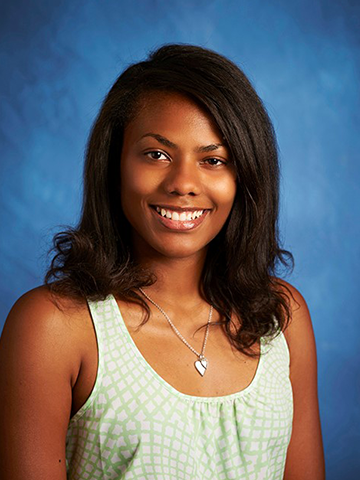 Ashley N. Patterson is an Assistant Professor of Languages and Literacies in the Department of Curriculum and Instruction at Penn State University where she teaches a variety of courses addressing literacy issues through a social justice lens. Her research focuses on intersections of educational experiences and identity; she inquires into the ways in which self-understandings impact educationally-based experiences and, conversely, how those experiences affect the ways individuals understand themselves.
Ashley N. Patterson is an Assistant Professor of Languages and Literacies in the Department of Curriculum and Instruction at Penn State University where she teaches a variety of courses addressing literacy issues through a social justice lens. Her research focuses on intersections of educational experiences and identity; she inquires into the ways in which self-understandings impact educationally-based experiences and, conversely, how those experiences affect the ways individuals understand themselves.
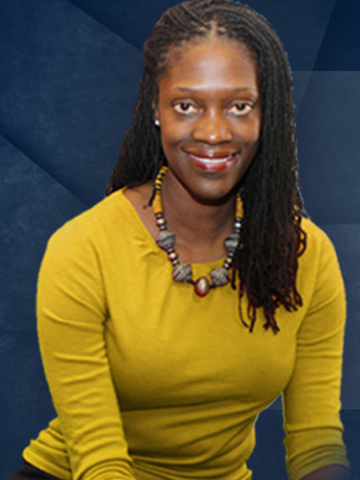 Valerie Kinloch is the Renée and Richard Goldman Dean of the School of Education and Professor at the University of Pittsburgh. Her scholarship examines the literacies of youth and adults inside and outside schools, with a particular focus on race, place, and equity. Among her other publications, she is the author of Harlem On Our Minds: Place, Race, and the Literacies of Urban Youth, which received the 2012 Outstanding Book of the Year Award from the American Educational Research Association. Currently, she is working on projects related to education, leadership, and community engagement.
Valerie Kinloch is the Renée and Richard Goldman Dean of the School of Education and Professor at the University of Pittsburgh. Her scholarship examines the literacies of youth and adults inside and outside schools, with a particular focus on race, place, and equity. Among her other publications, she is the author of Harlem On Our Minds: Place, Race, and the Literacies of Urban Youth, which received the 2012 Outstanding Book of the Year Award from the American Educational Research Association. Currently, she is working on projects related to education, leadership, and community engagement.
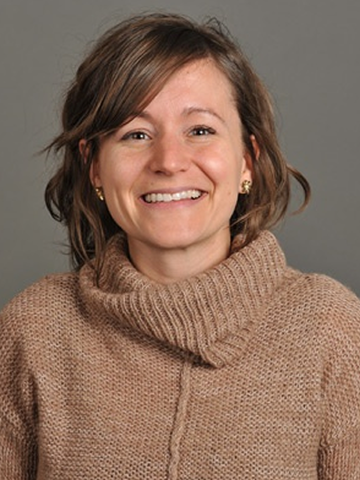 Emily A. Nemeth is an Assistant Professor in the Department of Education at Denison University. She currently teaches undergraduate courses in literacy, community engagement, equity pedagogies, and queer theory. Her research explores the literacy lives of adolescent youth in community contexts and the learning opportunities afforded by expanding space and literacy resources through service-learning.
Emily A. Nemeth is an Assistant Professor in the Department of Education at Denison University. She currently teaches undergraduate courses in literacy, community engagement, equity pedagogies, and queer theory. Her research explores the literacy lives of adolescent youth in community contexts and the learning opportunities afforded by expanding space and literacy resources through service-learning.
